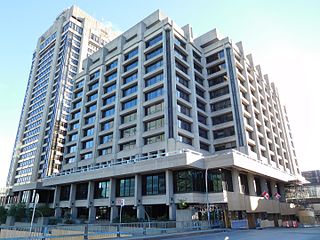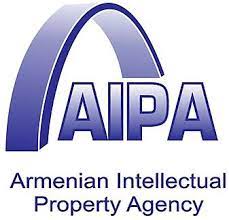
A patent is a type of intellectual property that gives its owner the legal right to exclude others from making, using, or selling an invention for a limited period of time in exchange for publishing an enabling disclosure of the invention. In most countries, patent rights fall under private law and the patent holder must sue someone infringing the patent in order to enforce their rights. In some industries patents are an essential form of competitive advantage; in others they are irrelevant.

The World Intellectual Property Organization is one of the 15 specialized agencies of the United Nations (UN). Pursuant to the 1967 Convention Establishing the World Intellectual Property Organization, WIPO was created to promote and protect intellectual property (IP) across the world by cooperating with countries as well as international organizations. It began operations on 26 April 1970 when the convention entered into force. The current Director General is Singaporean Daren Tang, former head of the Intellectual Property Office of Singapore, who began his term on 1 October 2020.
A software patent is a patent on a piece of software, such as a computer program, libraries, user interface, or algorithm.
An industrial design right is an intellectual property right that protects the visual design of objects that are purely utilitarian. An industrial design consists of the creation of a shape, configuration or composition of pattern or color, or combination of pattern and color in three-dimensional form containing aesthetic value. An industrial design can be a two- or three-dimensional pattern used to produce a product, industrial commodity or handicraft.

The European Patent Convention (EPC), also known as the Convention on the Grant of European Patents of 5 October 1973, is a multilateral treaty instituting the European Patent Organisation and providing an autonomous legal system according to which European patents are granted. The term European patent is used to refer to patents granted under the European Patent Convention. However, a European patent is not a unitary right, but a group of essentially independent nationally enforceable, nationally revocable patents, subject to central revocation or narrowing as a group pursuant to two types of unified, post-grant procedures: a time-limited opposition procedure, which can be initiated by any person except the patent proprietor, and limitation and revocation procedures, which can be initiated by the patent proprietor only.
The Paris Convention for the Protection of Industrial Property, signed in Paris, France, on 20 March 1883, was one of the first intellectual property treaties. It established a Union for the protection of industrial property. The convention is currently still in force. The substantive provisions of the Convention fall into three main categories: national treatment, priority right and common rules.
In patent law, industrial design law, and trademark law, a priority right or right of priority is a time-limited right, triggered by the first filing of an application for a patent, an industrial design or a trademark respectively. The priority right allows the claimant to file a subsequent application in another country for the same invention, design, or trademark effective as of the date of filing the first application. When filing the subsequent application, the applicant must claim the priority of the first application in order to make use of the right of priority. The right of priority belongs to the applicant or his successor in title.
Industrial property is one of two subsets of intellectual property, it takes a range of forms, including patents for inventions, industrial designs, trademarks, service marks, layout-designs of integrated circuits, commercial names and designations, geographical indications and protection against unfair competition. In some cases, aspects of an intellectual creation, although present, are less clearly defined. The object of industrial property consists of signs conveying information, in particular to consumers, regarding products and services offered on the market. Protection is directed against unauthorized use of such signs that could mislead consumers, and against misleading practices in general.

The Canadian Intellectual Property Office is responsible for the administration and processing of the greater part of intellectual property (IP) in Canada. CIPO's areas of activity include patents, trademarks, copyright, industrial designs and integrated circuit topographies. Structurally, CIPO functions as a special operating agency (SOA) under Innovation, Science and Economic Development Canada. CIPO is based in Gatineau, Quebec, part of the National Capital Region. CIPO’s current interim Chief Executive Officer is Konstantinos Georgaras.
Intellectual property rights (IPRs) have been acknowledged and protected in China since the 1980s. China has acceded to the major international conventions on protection of rights to intellectual property. Domestically, protection of intellectual property law has also been established by government legislation, administrative regulations, and decrees in the areas of trademark, copyright, and patent. This has led to the creation of a comprehensive legal framework to protect both local and foreign intellectual property. Despite this, copyright violations are extremely common in the PRC. The American Chamber of Commerce in China surveyed over 500 of its members doing business in China regarding IPR for its 2016 China Business Climate Survey Report, and found that IPR enforcement is improving, but significant challenges still remain. The results show that the laws in place exceed their actual enforcement, with patent protection receiving the highest approval rate, while protection of trade secrets lags far behind. Many US companies have claimed that the Chinese government has stolen their intellectual property sometime in 2009–2019.
The following outline is provided as an overview of and topical guide to intellectual property:

The Organisation Africaine de la Propriété Intellectuelle or OAPI is an intellectual property organization, headquartered in Yaoundé, Cameroon. The organisation was created by Bangui Agreement of March 2, 1977. The Bangui Agreement was subsequently amended in 1999.
The Corporate Affairs and Intellectual Property Office (CAIPO) is a Barbadian governmental agency in charge of various aspects of industrial property right affairs including: patents, trademarks, and industrial designs. It is a division of the Ministry of Industry & International Business. The CAIPO office is located on Belmont Road, Saint Michael, Barbados. The country ranks as one of the top countries where the greatest number of foreign patents are legally based.
Iran is a member of the WIPO since 2001 and has acceded to several WIPO intellectual property treaties. Iran joined the Convention for the Protection of Industrial Property in 1959. In December 2003 Iran became a party to the Madrid Agreement and the Madrid Protocol for the International Registration of Marks. In 2005 Iran joined the Lisbon Agreement for the Protection of Appellations of Origin and their International Registration, which ensures the protection of geographical names associated with products. As at February 2008 Iran had yet to accede to The Hague Agreement for the Protection of Industrial Designs.

The Intellectual Property Office of Singapore (IPOS) is a statutory board under the Ministry of Law of the Government of Singapore. IPOS advises on and administers intellectual property (IP) laws, promotes IP awareness, and provides the infrastructure to facilitate the development of IP in Singapore.
Industrial property law in Mexico has been changing in order to be updated with the international tendencies. The process of integration in NAFTA is one these international factors that have affected the law. It has defined aspects of the current law, and especially its limitations in relation to foreign investments. The law is designed to protect inventions. Inventions are classified according to this law in: patents, utility models and industrial designs. Each of them has different definitions and characteristics that the law explains. This article includes some background, legal definitions and effects of the law.
Republic Act No. 8293, otherwise known as The Intellectual Property Code of the Philippines lays down the rules and regulations that grant, and enforce patents in the Philippines. Patents may be granted to technical solutions such as an inventions, machines, devices, processes, or an improvement of any of the foregoing. The technical solution must be novel, innovative, and industrially useful. In order for a technical solution to be granted a patent, the inventor must file an application to the Bureau of Patents, which will examine, and in some cases, grant its approval. The law is designed as to foster domestic creativity, to attract foreign investors, and to motivate inventors to release their products for public access.

Intellectual property refers to an intangible property right which is enjoyed by law after the engagement in intellectual creative conducts, which cover a range of intangible property rights: patent, copyrights, trademark, design right and an indication of the original. Europe Union regulates the range of the law, including three different interdependent serious legislation, primary and secondary legislation, and law in cases. The empty area regulated by individual national members is not in the coverage of EU law. Based on the EU treaties, EU members each have the right to transfer and implement the discretion of EU law. Therefore, compared to conducting the application to the separate countries in EU it harbors more advantages to apply for the European patent office when seeking to obtain more extensive patent protection. That is to say, at each signatory of the Convention of European Patent, the holder who are granted the patent is given the equivalent right to the national patent of the countries.

The Intellectual Property Agency of Armenia (AIPA) is the patent office of Armenia. The agency works under the supervision of the Ministry of Economy of Armenia and is tasked with granting patent and IP address protections, trademarks, and copyrights for objects of industrial property, inventions and usage patterns, industrial design, and commercial and service marks, among others.
Intellectual property of Ethiopia is managed by the Ethiopian Intellectual Property Office (EIFO), who oversees Intellectual Property Right (IPR) issues. Ethiopia has not signed IPR treaty such as the Paris Convention for the Protection of Industrial Property, the World Intellectual Property Organization (WIPO) copyright treaty, the Berne Convention for Literary and Artistic Works, the Madrid System for the International Registration of Marks, and the Patent Cooperation Treaty.








